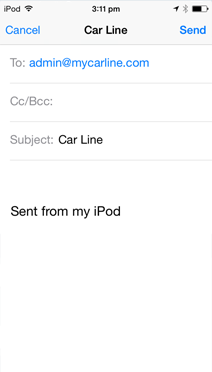
.jpg)
- #Beacon uuid generator how to
- #Beacon uuid generator android
- #Beacon uuid generator Bluetooth
- #Beacon uuid generator series
- #Beacon uuid generator free

The first byte: 0x02 because we only count the following bytes.Most beacon protocols, if not all, have only 2 AD structures which are as follows. That’s all there is to it - just a succession of AD structures. The rest of the bytes are data structured in a predefined way, depending on what AD type the previous type defined.The second byte is the ID of an AD structure type.This allows a receiver of this structure to know when it ends and when a new AD structure starts. The first byte represents the number of bytes left to the end of the AD structure.They are sequences of bytes of various size, with a predefined structure that goes as follows: The scan response is divided into what are called AD structures. If we create a smaller scan response, the remaining bytes will be filled with as many 0s.
#Beacon uuid generator Bluetooth
So if those are more your cup of tea, check them out!Īccording to the Bluetooth core specification, a beacon advertises a data package called the Scan Response Data. Which is great because the original Beacons can only advertise information!īy the way, we've already published our tutorials for iOS iBeacon and Tessel beacon.
#Beacon uuid generator how to
We’ll show you how to start a two-way communication with a beacon.
#Beacon uuid generator series
This tutorial is part of our more-extensive series on building smarter beacons, and you can check out the beacon series overview here.
#Beacon uuid generator android
This blog post is our series overview to get you started, and after that, check out our in-depth tutorials on building an Android beacon emitter (publisher), and Android beacon detector (listener). In this tutorial, we dissect the signal emitted by beacons and then use this knowledge to show you how you can use the brand new Android BLE package.

#Beacon uuid generator free
We’ve got a more than generous free sandbox tier for development! You’ll need the API keys at the beginning of this tutorial. The first thing you’ll need to do before getting started is to signup for a PubNub account. It features 8 types of user data, and is open-source, so it’s pretty flexible with various mobile platforms. This open-source beacon protocol was created by Tecno-World. It is open-source, which provides for customizable source code. Previously named UriBeacon, it is very flexible and, since it’s created by Google, works very well with all Google products and devices.ĭesigned by Radius Networks, it doesn’t favor one vendor over another. It’s pretty easy to use, and it is very widely supported.Įddystone is Google’s answer to Apple’s iBeacon. IBeacon was created by Apple and was the first beacon protocol introduced. Newer versions of Android require that you request location permission from the user at runtime in order to detect beacons.This is very new to Android phones, so expect the Beacon phenomenon to get bigger in the near future! Types of Beacons & Their Differences However, because the chip would not allow multiple simultaneous beacon emissions, the final release of Android Lollipop prevents the Nexus 5 from using this technology! Android 10.0 was just released and has a new location permission model that requires beacon apps to make changes to target SDK version 29+. Under the Android 5.0 testing version, the Nexus 5 was able to act as a beacon. There are very few devices that have the hardware to act as beacons. They’ve been using beacons on iPhones since the 4S! They were also the first company to come out with Beacon protocols, but we’ll get into that later. The reason for iBeacon being so prominent is mostly thanks to Apple. Even years after their launch, Beacons are still featured in the news, mostly under the name “iBeacon” – Apple’s protocol using Beacon technologies. Beacons are one technology that have taken the spotlight. Here’s the deal - Retailers are always looking for the next great way to generate sales.


 0 kommentar(er)
0 kommentar(er)
